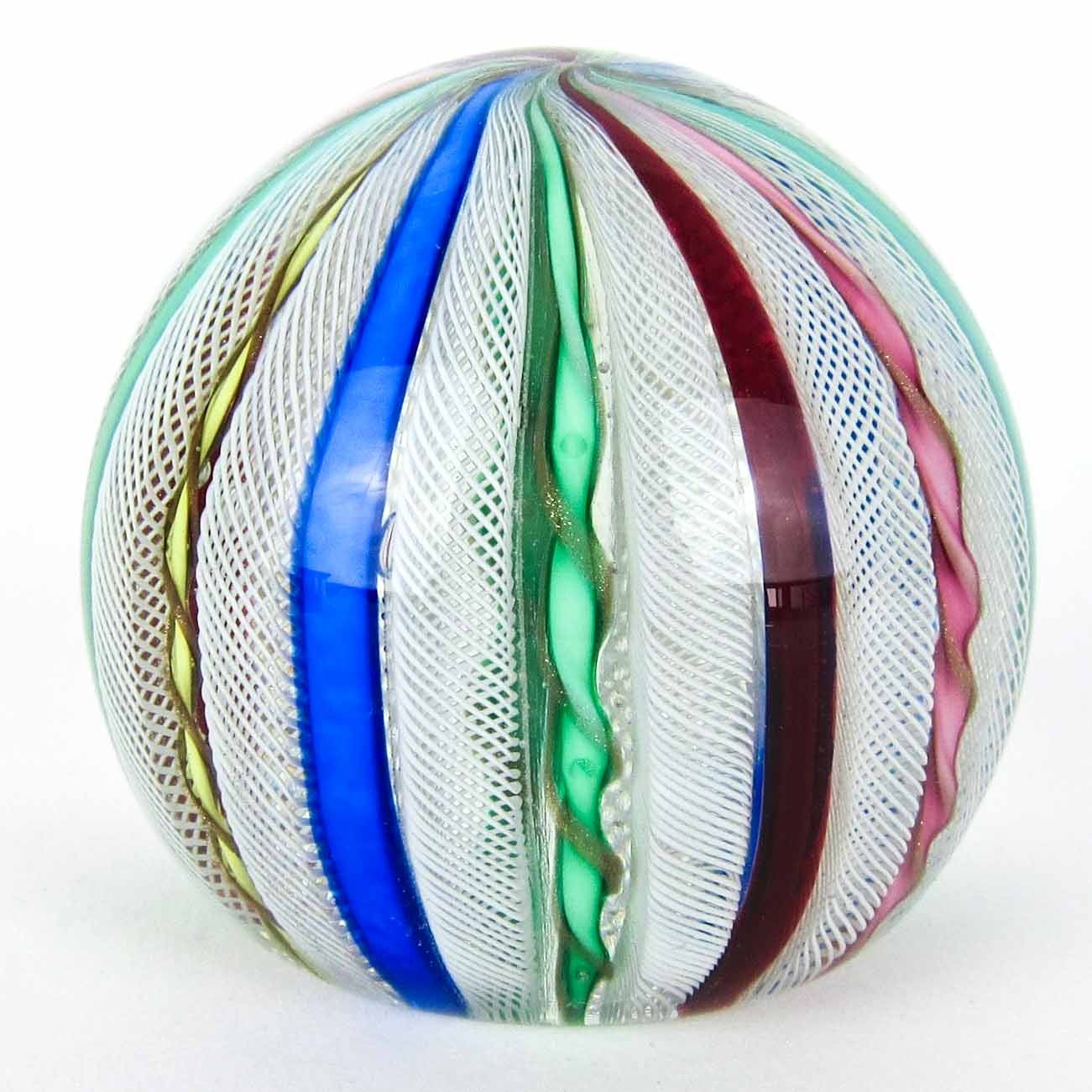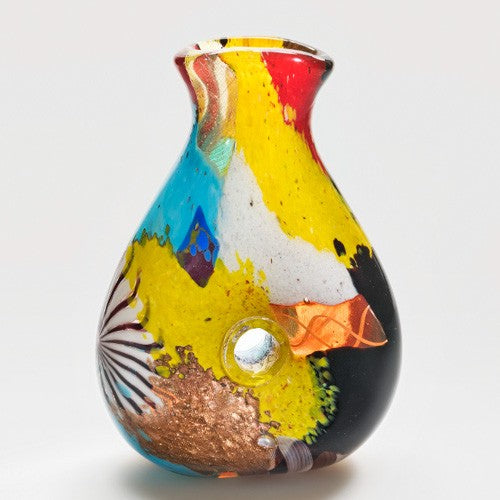Search
Categories
Archive
- September 2022
- February 2022
- September 2021
- May 2021

Also Alexandrite. This peculiar technique is produced with the inclusion of neodymium oxide into the molten glass. In this way, the Murano glass artwork will change color with different lighting c...

The a puntini (dotted) and a strisce (striped) glass were included in a small series presented at the Paris Universal Exhibition in 1937 and showcased at the 21st Venice ...

It is the incandescent ball of molten glass taken from the oven with the metal cane, in order to be shaped and blown by the maestro. Pea is the first embryo of the object being formed. It derives f...

Lavorazione a Lume - Lampworking
Letteraly Lampwork. It consists in melting the glass canna by blowtorch. This technique allows to create detailed and accurate shapes. It was used by the Conterie to make the classical Venetia...
Small seized glass shards, generally, coloured, used for spotted couloring. Received that name for the thicker part of the corn flour that that is in fact wanted effect with this techniq...
Iron beam with two points on one end. It is used by the "forcellante" to bring the glass objects to the tempering oven.
It is the lower final part of the classical chandelier. It includes two parts: the real end ("finale") on one side and on the other a little element called "fiocco" (ribbon) which is fixed ...
Fragments of iron-rust that remain in the glass and that derive from the "canna" . Obviously, they should be considered as defects of the glass

(Paperweights) was invented by Pietro Bigaglia in 1845 and consists in a trasparent glassmass with fragments inside .The technique, which is extremely sophisticated nowadays, allows to be extreme...

Period of time during which the glass is removed from the crucible. Indicates a period of inactivity for the furnace. Generally twice a year, August and January, the ovens are mainta...

It is a colour of a tone between blue and green, particularly used by glassmasters during the Renaissance period.

A bollicine (bubble) glass can be considered one of the first examples of Carlo Scarpa ’s work at Venini . Some of the items in this series were included in the sales catalogue at the beginnin...
Translated from the Venetian it means pure.It is the name that the Murano glassmakers give when the glass is lifted directly from the crucible and worked as it is without decorations, shades or oth...

This process aims to achieve identical outcomes as the acid process, but without the adverse effects associated with the latter due to the utilization of harmful substances. Sand or alumina powder...

This term indicates two very different types of glass. Chronologically, the first one is the one made by Ercole Barovier in 1940, characterised by a "tartan" motif consisting of flat coloured ro...
Literally "man of the night" . The most delicate job is carried out during the night, a true alchemy. The secrets of the composition of the siliceous sand, of the alum (or Soria sand) are cheris...

It is a cold working process, when the piece is finished and the furnace piece is completely cooled even inside.The grinding wheel is part of the abrasive tools which are mechanical means such as t...

The laccati neri e rossi series was first presented at the 22nd Venice Biennale (1940) and received great press coverage. This series included intensely-coloured glass, presenting a Chinese lacq...
